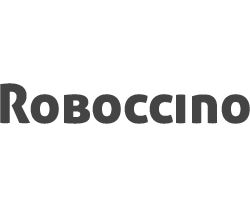How to Optimize Your Cafe Robot for Maximum Efficiency and Customer Engagement
In the rapidly evolving landscape of the food and beverage industry, the integration of technology, particularly Cafe Robots, has become a game-changer for operational efficiency and customer engagement. According to a report by QSR Magazine, the adoption of robotics in restaurants has surged by around 30% over the past two years, driven by a growing demand for automation and seamless service delivery.
Moreover, a survey conducted by the National Restaurant Association revealed that nearly 75% of restaurant operators believe that employing robots can enhance both customer satisfaction and staff productivity. As cafes strive to optimize their services amidst increasing competition and shifting consumer preferences, understanding how to effectively deploy and optimize Cafe Robots becomes paramount.
This guide will explore strategies for maximizing the efficiency of these automated systems while fostering meaningful interactions with customers, ultimately leading to an elevated dining experience.
Identifying Key Tasks for Your Cafe Robot to Enhance Workflow Efficiency
In a bustling café environment, optimizing the tasks assigned to your café robot is crucial for enhancing workflow efficiency. Start by identifying repetitive and time-consuming tasks that can be delegated to the robot. These might include brewing coffee, preparing simple menu items, or managing orders at the counter. By automating these tasks, staff members can focus on more complex responsibilities, such as personalized customer interaction and creating a welcoming atmosphere. This not only boosts productivity but also elevates the overall customer experience.
Additionally, gathering data on peak hours and popular menu items can help in fine-tuning the robot's operational schedule. For instance, programming the robot to prepare high-demand beverages during rush hours can significantly reduce wait times and improve service. Incorporating real-time feedback from customers will also enable continual adjustment of tasks performed by the robot, ensuring it meets customer preferences effectively. This ongoing optimization will lead to a more seamless workflow, enhancing both efficiency and customer engagement in your café.
How to Optimize Your Cafe Robot for Maximum Efficiency and Customer Engagement
| Task | Description | Time Efficiency (%) | Customer Engagement Score (Out of 10) |
|---|---|---|---|
| Order Taking | Automatically take customer orders using speech recognition. | 90 | 8 |
| Payment Processing | Handle payments through multiple methods securely. | 85 | 7 |
| Food Preparation | Assist chefs in food preparation tasks, ensuring consistency. | 70 | 9 |
| Inventory Management | Monitor stock levels and reorder supplies automatically. | 80 | 6 |
| Customer Feedback Collection | Gather customer feedback post-service for improvements. | 95 | 10 |
Customizing Robot Interactions to Boost Customer Engagement and Satisfaction
To enhance customer engagement and satisfaction in a cafe setting, customizing robot interactions can play a pivotal role. According to a study conducted by the National Restaurant Association, nearly 70% of consumers are more inclined to return to businesses that leverage technology to improve service quality. By programming cafe robots to exhibit friendly and personable behaviors, operators can create a more inviting atmosphere that encourages customer interaction. For example, robots can be designed to engage customers by remembering their names and previous orders, fostering a sense of familiarity and personalization.
Furthermore, industry reports indicate that robots that can respond to customer moods or queries significantly enhance the overall experience. A survey by QSR Magazine found that 65% of patrons expressed a preference for establishments that utilize interactive technology, noting that it adds an element of fun to their visit. Through voice recognition and adaptive learning algorithms, robots can tailor their interactions to suit individual preferences, making each visit unique. This level of customization not only boosts customer satisfaction but also drives repeat business, ultimately maximizing cafe efficiency and profitability while creating memorable dining experiences.
Integrating Smart Technology to Monitor Performance and Gather Feedback
Integrating smart technology into your café robot system is essential for enhancing performance and boosting customer engagement. To achieve this, consider implementing real-time monitoring tools that track the robot’s efficiency, order accuracy, and even customer interactions. This data allows you to make informed adjustments to workflows, ensuring a seamless experience for your patrons.
Tip 1:
Utilize customer feedback mechanisms, such as touch screens or mobile apps, to collect insights on their experiences. Tailoring services based on customer preferences not only improves satisfaction but also increases their likelihood of returning.
Furthermore, harnessing data analytics can help identify peak service times and common customer requests. Understanding these patterns enables you to program your robot to be most effective during busy hours, ensuring that every customer receives prompt service.
Tip 2:
Regularly review and update your robot’s operational protocols based on customer feedback and performance metrics. This iterative process fosters continuous improvement, keeping your café at the forefront of technological innovation and customer service excellence.
Training Staff to Collaborate Effectively with Cafe Robots for Optimal Service
In an era where technology meets hospitality, training staff to collaborate effectively with cafe robots is crucial for enhancing service efficiency and customer engagement. Staff members need to be equipped not only with the skills to operate these robotic assistants but also with the ability to integrate their functions seamlessly into daily operations. This collaboration ensures that human employees can focus on personalized customer interactions while the robots handle routine tasks, such as order taking and preparation.
Furthermore, proper training programs should emphasize the importance of teamwork between staff and robots. Staff who understand the capabilities and limitations of robots are better equipped to leverage their strengths, thereby creating a more efficient workflow. By fostering an environment where human and robotic workers can communicate and work in tandem, cafes can enhance the overall customer experience. This approach not only addresses the current staffing shortages but also positions the hospitality industry to adapt and thrive in a future where AI and human workers evolve together in their roles.
Analyzing Customer Data to Continuously Improve Service and Offerings
In an increasingly competitive retail landscape, understanding customer behavior through data analytics has become paramount. Predictive analytics leverages historical data to forecast future customer actions, allowing cafes to adapt their service offerings in real time. According to a report by Deloitte, businesses implementing predictive analytics have seen a 10-20% improvement in customer engagement and satisfaction levels. By analyzing purchasing patterns and preferences, cafe robots can optimize their interactions, ensuring personalized experiences that resonate with individual customers.
Moreover, the integration of big data analytics facilitates continuous improvement in customer service. A research study from McKinsey suggests that firms using big data effectively can enhance their customer retention rates by up to 25%. By analyzing customer feedback and operational data, cafes can refine their product offerings and service strategies, leading to better customer outcomes. The future of customer service hinges on AI and data analytics, which will empower businesses to create tailored experiences that not only meet but exceed customer expectations. This transformative approach fosters loyalty and drives growth, positioning cafes at the forefront of industry innovation.

